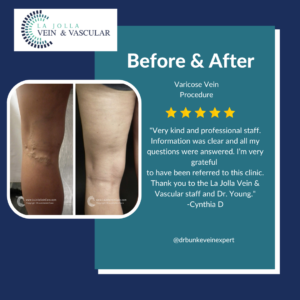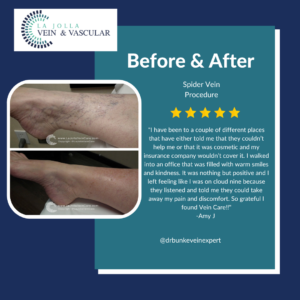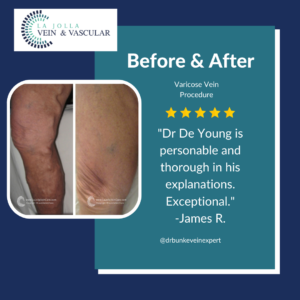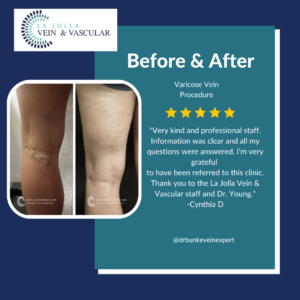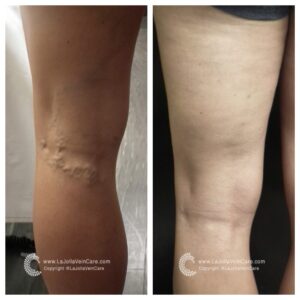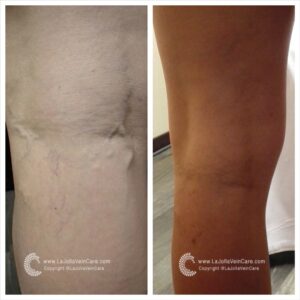Understanding what vein disease is and is not
LJVascular2023-08-29T18:44:36-07:00Understanding what vein disease is and is not
Venous reflux disease, alternatively referred to as venous stasis, venous insufficiency, or venous incompetence, is a complex condition affecting the veins of the legs. In this article, we will delve into the details of venous reflux disease, from its causes and symptoms to the progressive nature of the condition. We’ll also explore the crucial role of ultrasound technology in diagnosing and formulating personalized treatment plans.
Understanding Venous Reflux
At the heart of venous reflux disease lies the concept of ‘leaky valves’ within the leg veins. These valves, responsible for maintaining proper blood flow, may fail, causing blood to flow backward (reflux) instead of towards the heart. Venous reflux can occur in both deep and superficial leg veins, affecting the efficiency of blood circulation.
The Anatomy of Reflux
In the leg veins, there are two main types: deep and superficial. The deep veins, residing within the muscle, carry the majority of blood from the legs back to the heart. On the other hand, superficial veins are situated outside the muscle, just beneath the skin. Key players in the realm of superficial veins are the Great Saphenous Vein (GSV), coursing through the thigh and calf, and the small saphenous vein, running along the back of the calf.
Impact of Leaky Valves
Ordinarily, one-way valves in leg veins facilitate blood flow against gravity, aided by the contraction of calf muscles. When these valves become leaky, blood flows backward, leading to blood pooling in the lower legs. This condition manifests in symptoms such as leg heaviness, pain, fatigue, ankle swelling, and even restless legs at night. Over time, venous reflux disease can progress, giving rise to skin changes, including darkening, dryness, itching, and the potential development of venous leg ulcers.
Diagnosis through Ultrasound
Diagnosing venous reflux disease requires specialized tools, with ultrasound technology leading the way. Not all vein issues are visible to the naked eye, as many arise from veins beneath the skin’s surface. Ultrasound examinations provide insights into the direction of blood flow, valve functionality, and the presence of blockages or scars in the veins.
Personalized Treatment Steps
Addressing venous reflux disease involves a strategic approach tailored to each patient’s unique condition. The treatment process typically consists of three key steps:
Step 1: Treating Underlying Reflux
The initial focus is on addressing the root cause—venous reflux. This is achieved by targeting the saphenous veins, which are often the origin of the issue. Innovative vein ablation procedures like radiofrequency ablation, laser ablation, mechanico-chemical ablation (MOCA), and Varithena Foam are employed to restore proper blood flow.

Step 2: Tackling Varicose Veins
Once underlying reflux is resolved, attention shifts to varicose veins. Foam sclerotherapy, involving injections of a foamed medication, or minimally invasive removal methods, can be employed to eliminate bulging veins.

Step 3: Managing Spider Veins
For those seeking cosmetic enhancement, spider vein treatment through sclerotherapy is available. Although cosmetic in nature, this step completes the comprehensive treatment journey.

Venous reflux disease is a multifaceted condition that requires specialized care for effective management. Our approach encompasses state-of-the-art diagnostics, cutting-edge treatments, and personalized care to address the various aspects of this condition. Through our expertise and commitment, we aim to provide transformative outcomes, enhancing both the health and quality of life of our patients. If you’re ready to embark on the journey to healthier veins, contact us to take the first step towards comprehensive vein and vascular wellness.
“Bringing Experts Together for Unparalleled Vein and Vascular Care”
La Jolla Vein & Vascular (formerly La Jolla Vein Care) is committed to bringing experts together for unparalleled vein and vascular care.
Nisha Bunke, MD, Sarah Lucas, MD, and Amanda Steinberger, MD are specialists who combine their experience and expertise to offer world-class vascular care.
Our accredited center is also a nationally known teaching site and center of excellence.
For more information on treatments and to book a consultation, please give our office a call at 858-550-0330.
For a deeper dive into vein and vascular care, please check out our Youtube Channel at this link, and our website https://ljvascular.com
For more information on varicose veins and eliminating underlying venous insufficiency,
Please follow our social media Instagram Profile and Tik Tok Profile for more fun videos and educational information.
For more blogs and educational content, please check out our clinic’s blog posts!









